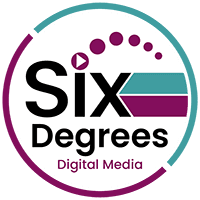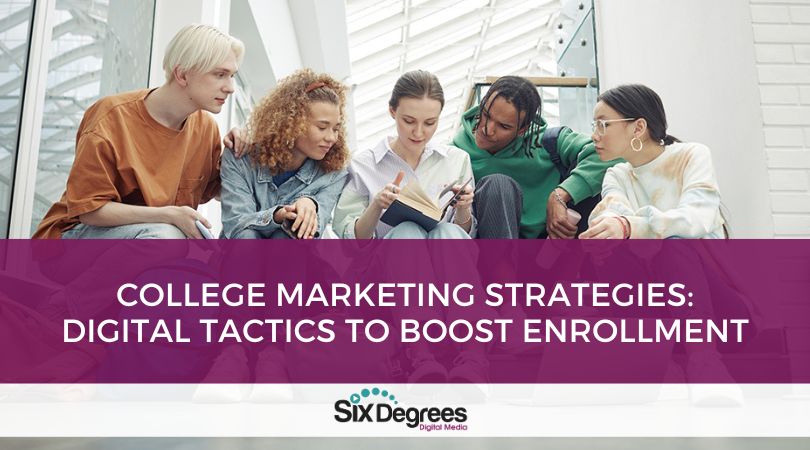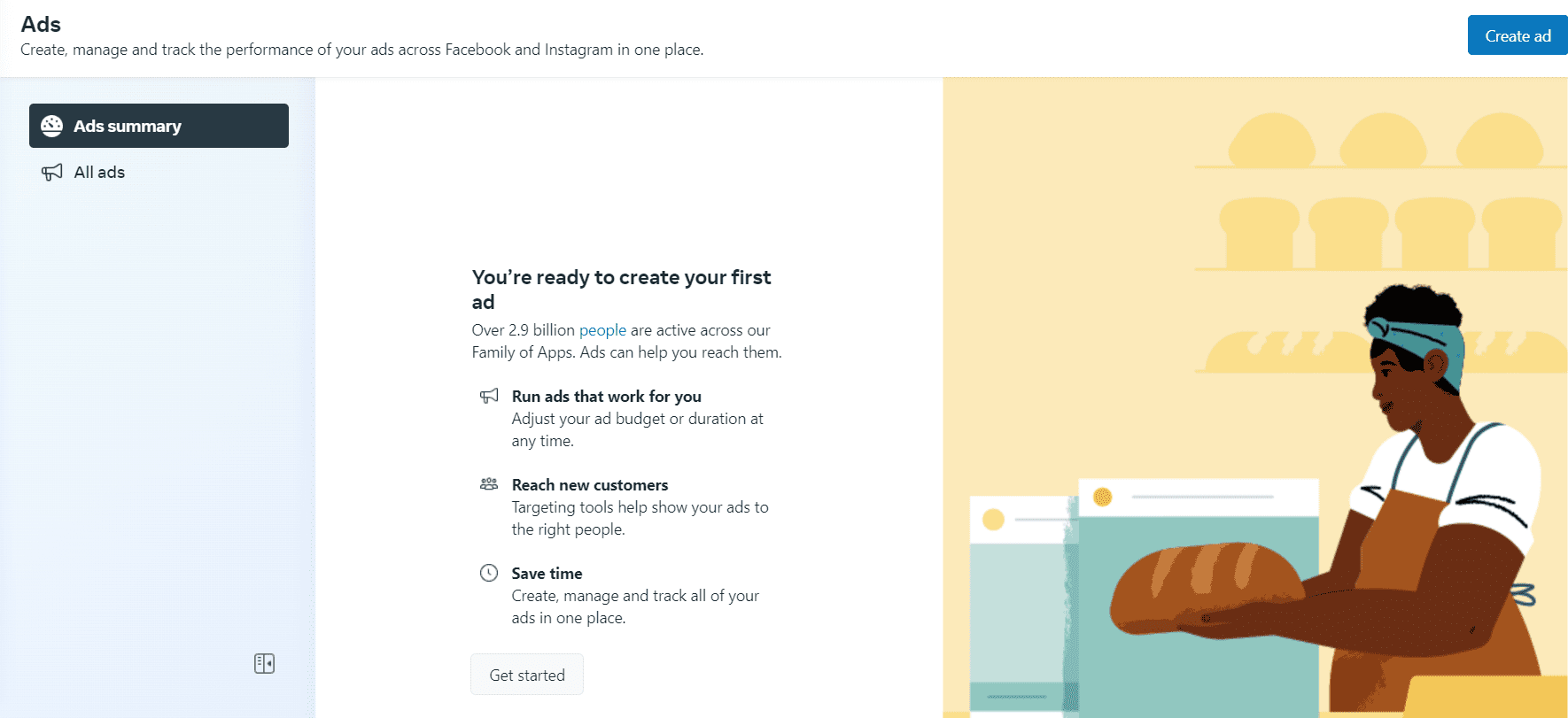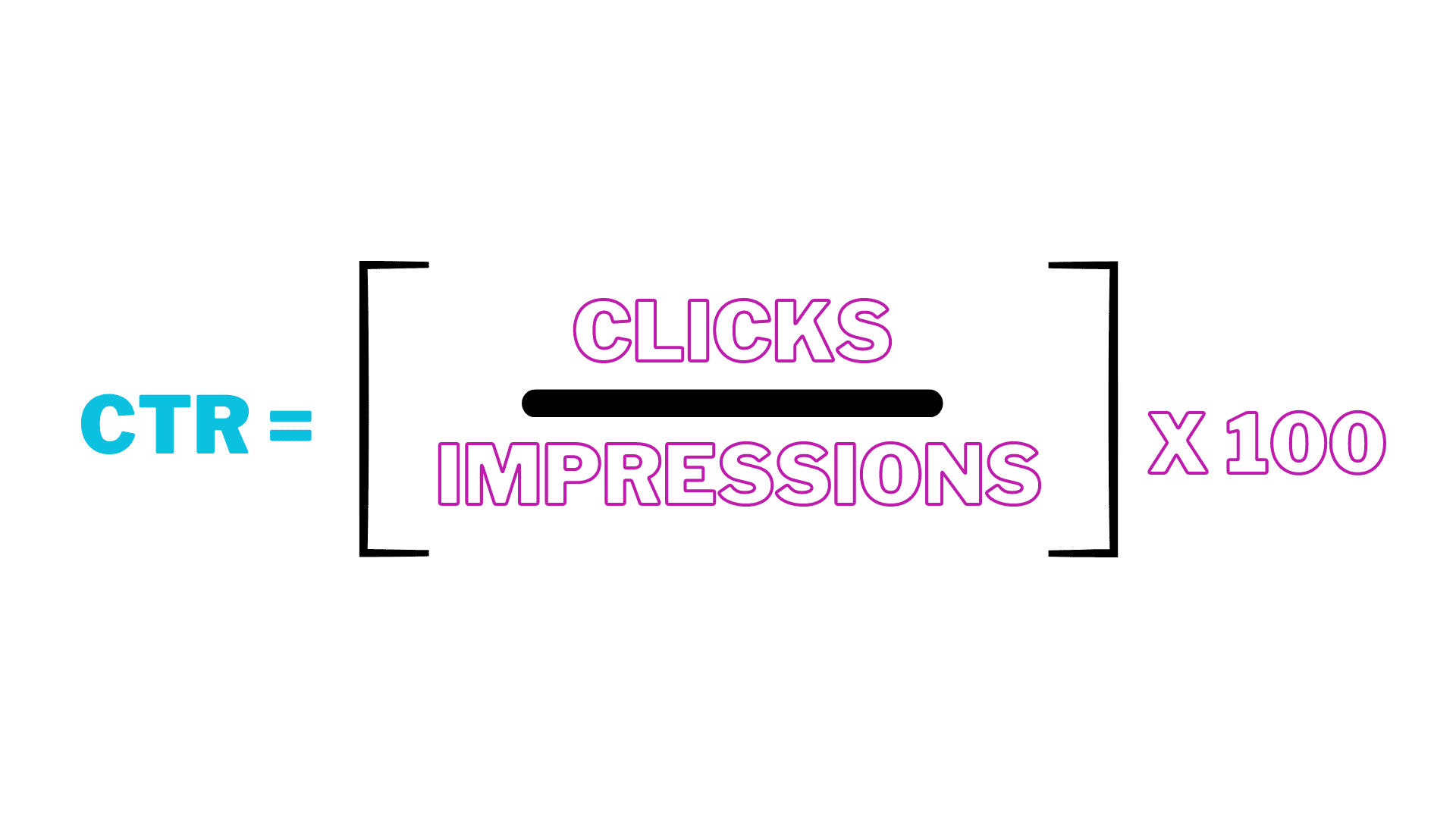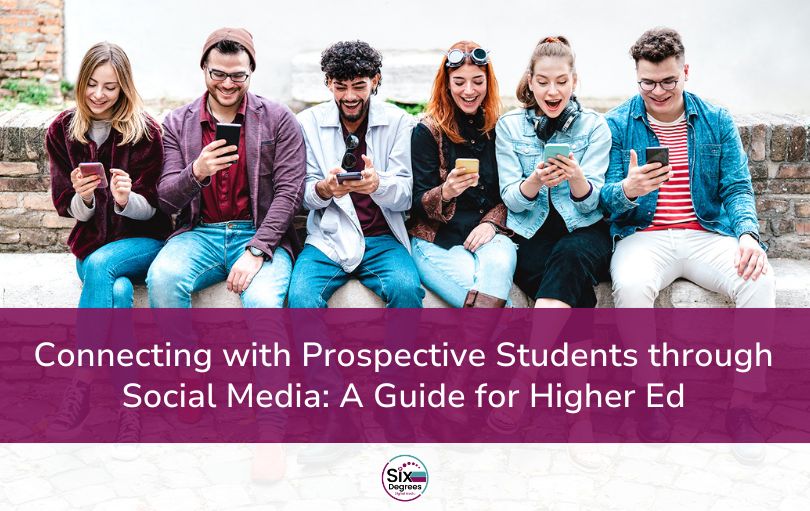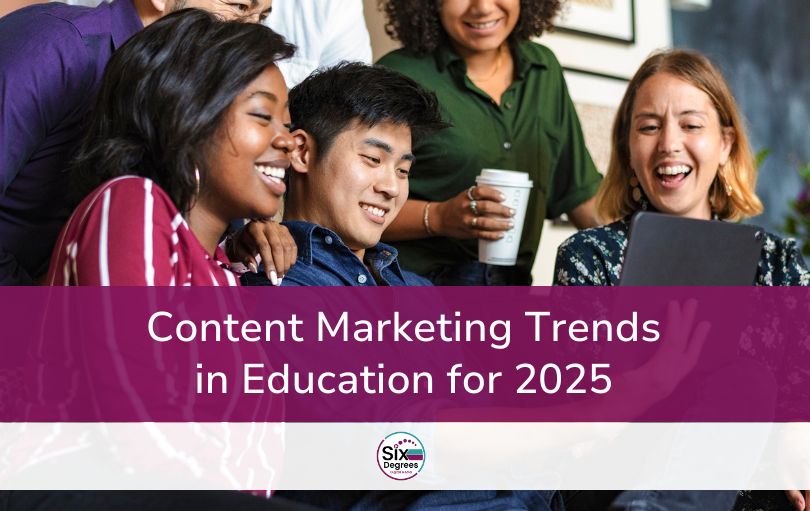If your enrollment numbers aren’t what they used to be, then it’s time to update your college marketing strategies.
When was the last time you reviewed your ideal student avatar?
The landscape of social media and video marketing shifts on a dime and without a consistent, adaptive strategy, you’ll soon begin to lose out on enrollments if you aren’t already.
In this blog, we’re going to talk about how to redirect the potential students you’re losing back into your funnel through college marketing strategies that evolve with your target audience. The secret? A smart foundation that you can customize when the latest trends hit to maximize the impact that any digital tactic has on your institution.
Table of Contents:
- College Marketing Strategies: Social Media
- Leverage SEO Tactics
- Email Marketing
- Paid Advertising
- Track Your Results
College Marketing Strategies: Social Media
Social media is a must-have tool for higher education institutions to connect with potential students and build meaningful relationships. That’s nothing new, but many colleges and universities are playing by a “post it and they will come” mentality, rather than applying the effective marketing strategies that make social media true powerhouse.
Social media is, by far, the easiest way that higher education institutions can reach prospective students and actually build relationships with them. However, it’s just as easy to post to an empty room and miss the attention of your target market entirely.
Get your institution on the right track to attract students by answering these questions:
- Who am I talking to?
- Where should I post?
- What should I post?
Who am I talking to?
Remember when I asked about your ideal student avatar? This information is going to inform every single part of your higher education marketing. If your approach stops and trying to reach students directly out of high school, you’re missing out on potential customers and brand ambassadors.
Effective higher education marketing strategies will segment their efforts to specific audiences and analyze what exactly today’s students look like.
How you reach students interested in online courses is going to look way different than how you reach and interact with prospective students who are interested in a robust campus life.
And here’s the kicker: social media marketing isn’t just to attract students. It’s also to create student ambassadors and to keep your alumni engaged and looking to support your college or university. Each one of these audiences is going to require a different approach when it comes to your digital marketing strategies.
Here’s a list of potential audiences you might have for your digital marketing:
- Potential students interested in online courses.
- Potential students interested in different degree programs (this can be further segmented by unique offers that your institution has to offer).
- Current students.
- Alumni who would be interested in supporting you.
- Alumni who would be interested in returning for a Grad degree or other program.
So many colleges will set up their social media accounts and only speak to one or maybe two of these audiences. They end up missing out on a huge pool of prospective students and the opportunity to build relationships that can truly make a difference for their marketing.
Key Takeaway:
Your digital marketing will suffer if you aren’t speaking to a specific audience. Segment your audiences and create content that addresses their unique wants, goals, fears, and frustrations.
So, what can you do to reach each of these specific audiences while creating a cohesive social media marketing strategy? Here are some effective methods to keep in mind:
- Build a specific persona for each audience that includes their demographics, psychographics, wants/aspirations, and fears/frustrations.
- Nail down the transformation that they are looking for that your higher education institution can provide. “Looking for” is key here- without the appropriate market research, you may think you know what today’s students are wanting (a degree, for instance), when their real focus is somewhere else (locking down employment).
- Be sure to connect with incoming students as well as collect feedback from your current programs to have a solid understanding of what should take center stage in your marketing strategy.
Keep these personas in mind because they are going to make the next two questions much easier to answer and will give your higher education marketing the boost it needs.
Where Should I Post?
Effective higher education marketing strategy means you aren’t wasting your time where you aren’t going to see results. Knowing your audiences means that you will know where they are hanging out online. Are your recent high school grads living it up on LinkedIn? Not likely. But your alumni are.
Age, interests, and more will influence where your audiences are. Running digital ads on TikTok may be exactly what you need to reach prospective students. Those virtual campus tours can look great on Instagram.
Map out where your target markets are and that will keep you from posting the right content on the wrong platform or wasting your time entirely while the people you want to reach flock to a completely different app.
What should I post?
Easy. Post what each of your avatars want to see on the platforms they love the most.
Ok, maybe it’s not that easy, but it is much, much easier with the work you’ve put in to segment your audience and understand them.
Creating Engaging Content:
- Create posts that resonate with your audience’s interests and aspirations.
- Promote interactive content such as quizzes, polls, or live Q&A sessions.
- Showcase success stories of alumni to inspire prospective students.
- Engage with current students by posting about student organizations and on-campus events.
- Highlight the transformation your university offers.
Other Effective Methods to Add to your Social Strategy
You could also consider partnering with influencers who align with your institution’s values. They can help amplify your message by reaching out to their followers on platforms like YouTube, TikTok, and Instagram.
Beyond posting content, it’s important to monitor what others are saying about your college online – this practice is known as ‘social listening’. Tools like Hootsuite can help track mentions of your brand across various social networks so you can respond promptly and appropriately.
College Marketing Strategies: Leverage SEO Tactics
In the digital era, a college’s web presence is as essential as the actual campus. To increase visibility and attract potential students, it’s crucial to leverage Search Engine Optimization (SEO) tactics.
SEO involves optimizing your website so that it ranks higher in search engine results pages (SERPs), making it easier for prospective students to find you. It’s a cornerstone of digital marketing.
So, how can you use SEO to build an effective higher education marketing strategy?
Keyword Research
The first step in any successful SEO strategy is keyword research. This involves identifying words and phrases that potential students might use when searching for colleges or courses like yours.
There are TONS of tools out there (free and paid) to help you figure out how students are searching for the transformation you can offer them:
- Google Keyword Planner
- SEMRush
- Longtail Pro
- AHREFS
Bonus: use Google’s autofill and “people also searched for” features to help inform your research.
SEO helps your students find you organically, which can cut down on your adspend. But you need to make sure your content is optimized for the keywords that you identify
Try to find keywords that have a decent amount of interest without an oppressive amount of competition.
On-Page Optimization
Once you’ve identified your keywords, the next step is on-page optimization. This includes incorporating these keywords into your site content, meta descriptions, title tags, and headers while ensuring the content remains engaging and informative.
One very important thing to keep in mind is that even though you really want the search engines to love your website, you want prospective students to love it even more. Never prioritize optimization over providing valuable, engaging content. It won’t encourage enrollments and the search engines can tell and will prioritize a competitor’s page over yours if they feel it is more valuable to their users.
Create Engaging Content
Digital marketing is all about what you can offer your target market- but a lot of higher education institutions don’t understand that it’s not just the value of your degree offers, it’s value that you can provide them for free. You already know what your audiences are looking for because you did the research we talked about in our Social Media section.
Now is your opportunity to offer that information directly to your audience. Solve a problem for them. Help them reach a goal. Not sure what that means? Here is an example list of blog posts you can add to your site:
- Is an online degree respected as much as a traditional degree?
- Do you get to choose who you dorm with when you start college?
- Read the Syllabus and 10 other tips to prepare you for an easy first semester
- Transitioning to campus life: how to join student organizations
- What degrees are in high demand?
- The top 5 places to begin networking now to help you prepare for a career after graduation
Feel free to steal these ideas if they resonate with your audience. The important thing to see here is that they are all positioned with value in mind.
Link Building
A strong link profile also plays a significant role in how search engines rank websites. By earning high-quality backlinks from reputable sites within your industry or niche, you can boost your site’s authority and improve its SERP ranking.
Remember when we talked about social media influencers? They can be a great way to build links, but so can your alumni and any of your academic connections.
Please, do not go purchase shiny backlink packages online without proper research. The key is quality backlinks form great sites that are related to higher education or the various industries that your degrees cater to.
Technical SEO
Beyond keyword usage and link building lies technical SEO – an often overlooked but vital aspect of website optimization. It covers aspects such as mobile-friendliness, page load speed, URL structure, etc., all of which impact how easily search engines can crawl and index your site.
We cannot stress how ESSENTIAL having a mobile friendly website is these days. If your site doesn’t work on mobile, the students you want are going to enroll somewhere else.
Remember: While implementing these strategies will take time and effort, the benefits they offer make them well worth pursuing. So, get cracking and start optimizing your website today.
Key Takeaway:
SEO can be a tough nut to crack, new tools and tactics will always find a way to pull you from what’s important: Your potential students.
Book a strategy session with us today and we’ll make sure you’re on the right track to filling your seats, whether it’s online or on-campus.
College Marketing Strategies: Email Marketing
Email marketing is a powerful tool for the digital marketing strategies of colleges and universities. It’s an effective way to engage potential students, keep them informed about upcoming on-campus events or courses, and build relationships with them over time.
The first step towards successful email marketing is building a robust mailing list. This can be done through various methods such as offering valuable content like eBooks or webinars in exchange for email addresses, hosting online contests, or simply having a subscription form on your website.
Once you have them, it’s time for the next step: send them promotional emails relentlessly. This is a joke. Please, please do not do that.
Like with all other effective marketing strategies, your goal is to provide value to your audience so that they are excited to hear from you.
Create Engaging Content
Personalized emails based on student interests can significantly increase engagement rates. Offering opportunities and value to your alumni will go a lot farther than asking for donations every time they hear from you.
Want a digital marketing hack? You’ve already created engaging content if you followed our recommendations for your website.
If those blogs are comprehensive enough, you can break them down into a couple different emails per blog. Content marketing campaigns can be that easy, as long as you have excellent content to offer.
Analyze Your Campaigns
Analyzing your digital marketing campaigns will help you understand what works best for your audience – which subject lines get the most opens? Which calls-to-action result in clicks?
These insights will allow you to refine future campaigns and improve their effectiveness.
A/B Testing
A/B testing (or split testing) involves sending two slightly different versions of an email campaign to see which performs better. You might test different subject lines, images, copy lengths, etc.
The results from A/B tests can provide valuable insights into how small changes can impact campaign performance.
Remember: consistency is key when it comes to successful email marketing – consistent communication keeps prospective students engaged while providing them with relevant information they need during their decision-making process.
Bonus: Try adding a short video summary to the beginning of each email and include the word video in your subject lines. You will likely see a boost to your open rate and engagement.
Key Takeaway:
Consistent, value-driven communication through personalized emails can keep prospective students engaged while providing them with relevant information during their decision-making process.
College Marketing Strategies: Paid Advertising
Surprise- traditional marketing strategies may not be enough to reach your target audience effectively. This is where digital ads come into play.
Investing in paid advertising campaigns can help colleges and universities attract more potential students and increase their visibility online. Remember, ads are a world of pay-to-play.
This is not a great area to DIY unless you have factored in “not being an expert” into your marketing budget.
Trying to handle social media and content creation without digital marketing expertise can lead to wasted time and a lack of prospects, but jumping into paid ads without the requisite knowledge can cost you thousands.
The Power of Pay-Per-Click (PPC) Advertising
PPC advertising is an effective and cost-efficient paid promotion strategy widely utilized in higher education marketing. Unlike traditional advertising models, PPC campaigns only require payment when a user clicks on the ad, making it a highly measurable and cost-effective option for educational institutions.
Platforms like Google Ads provide educational institutions with the opportunity to target specific keywords relevant to higher education or their specific programs.
By carefully selecting keywords that align with their offerings, institutions can ensure that their ads are displayed to individuals who are actively searching for information related to their programs or the field of higher education. This targeted approach maximizes the chances of attracting highly interested and qualified leads.
The advantage of PPC advertising lies in its ability to deliver immediate visibility and generate traffic to an institution’s website or landing page. When users actively search for keywords related to higher education or specific programs, the institution’s ad is prominently displayed at the top of the search results, increasing its visibility and driving relevant traffic.
This ensures that the institution’s message reaches potential students who are actively engaged in the college decision-making process.
Additionally, PPC campaigns provide valuable insights and data that can be utilized to optimize marketing strategies. By tracking and analyzing the performance metrics of PPC campaigns, such as click-through rates, conversion rates, and cost per click, educational institutions can gain valuable insights into their target audience’s behavior and preferences.
It is worth noting that effective PPC campaigns require continuous monitoring, optimization, and testing. Advertisers must stay up-to-date with relevant keywords, adapt to market trends, and refine their strategies based on campaign performance.
Social Media Advertisements
Besides search engines, social media platforms also provide excellent channels for paid advertisements. Facebook Ads Manager allows granular targeting based on demographics, interests, and behaviors – perfect for reaching prospective students at different stages of their college decision-making process.
you know what I’m going to say next, because you’ve been paying attention: don’t spend money on Facebook Ads if your audience isn’t on Facebook. Every social media platform will gladly take your money, so make sure you’ve identified the right ones for your audience.
Each social media platform has its own unique characteristics and strengths. For example, Instagram may be more suitable for institutions with visually appealing campuses or strong photography programs, while LinkedIn might be a better fit for targeting professionals seeking career advancement through higher education.
By understanding the demographics and user behaviors of each platform, educational institutions can make informed decisions about which social media channels are most relevant to their audience and align with their marketing goals.
Social media platforms, such as Facebook Ads Manager, offer excellent avenues for implementing paid advertising strategies in higher education marketing.
With its granular targeting options based on demographics, interests, and behaviors, Facebook Ads Manager enables institutions to reach prospective students at different stages of their decision-making process.
However, it’s crucial to conduct thorough research to identify the social media platforms that are most relevant to the target audience and align with the institution’s marketing objectives.
By selecting the right platforms and utilizing their unique strengths, educational institutions can optimize their paid advertising efforts and effectively engage with prospective students.
Navigating Programmatic Advertising
Programmatic advertising is a highly effective digital marketing strategy that has gained significant traction in the realm of higher education marketing.
By harnessing the power of real-time bidding, this approach allows educational institutions to display their advertisements on a wide range of websites that are frequently visited by individuals who closely align with the profile of their ideal student candidates.
One of the key advantages of programmatic advertising is its ability to deliver targeted ads to the right audience at the right time.
Through sophisticated algorithms and data analysis, programmatic platforms can identify and target potential students who possess the desired characteristics, such as demographic information, interests, and online behavior. This precise targeting increases the chances of attracting qualified leads and optimizing the return on investment for marketing efforts.
Programmatic advertising offers the advantage of flexibility and scalability. Educational institutions can choose to display their ads across a vast network of websites that are relevant to their target audience, ensuring maximum exposure and reach.
By leveraging real-time bidding, institutions can bid for ad inventory, allowing them to optimize their budget and allocate resources effectively based on the performance of various websites.
Key Takeaway:
Remember, it’s not just about attracting traffic but attracting the right kind of traffic – prospective students who are genuinely interested in what your institution has to offer.
College Marketing Strategies: Track Your Results
Tracking your results is so, so important. Simply launching marketing campaigns and hoping for the best is not going to bring you the results you need.
By utilizing tools like Google Analytics, which is a free and powerful tool, you can gain valuable insights into the performance of your website and marketing efforts.
Google Analytics provides a wealth of data that helps you understand who is visiting your site, where they are coming from, and what pages they are viewing most often.
With Google Analytics, you can track various metrics and dimensions, such as the number of visitors, bounce rates, average session duration, and conversion rates. These metrics give you a comprehensive overview of how users interact with your website.
By analyzing the data from Google Analytics, you can identify patterns and trends that reveal the strengths and weaknesses of your website and marketing campaigns.
For example, you may discover that a particular landing page has a high bounce rate, indicating that it may need optimization or further targeting.
Alternatively, you may find that a specific traffic source, such as organic search or social media, generates a higher conversion rate, indicating the effectiveness of your efforts on those channels.
By regularly monitoring and analyzing the data from Google Analytics, higher education institutions can gain a deep understanding of their website’s performance, user behavior, and the effectiveness of their marketing strategies.
This knowledge empowers them to make data-driven decisions, optimize their campaigns, and allocate resources more effectively, ultimately driving better results and achieving their enrollment and marketing goals.
Analyzing Social Media Performance
Platforms like Facebook, Instagram, Twitter, and LinkedIn offer analytics to break down how effective your social media marketing and digital ads are.
- Track metrics like:
Engagement rates - Follower Growth
- Post Reach
By regularly analyzing the data provided by social media analytics tools, you can gain valuable insights into your audience’s behavior, preferences, and engagement patterns. These insights allow you to refine your social media strategy, create content that resonates with your target audience, and ultimately drive better results in terms of brand awareness, engagement, and conversions.
Email Marketing Metrics
To gauge the effectiveness of your email campaigns, it is crucial to track and analyze various email marketing metrics. Services like MailChimp, among others, offer comprehensive reporting features that provide insights into key data points.
Here are important email metrics to track:
- Open Rates
- Click-through Rates
- Bounce Rates
- Unsubscribe rates
Through the reporting features provided by email marketing platforms, you can gain insights into the effectiveness of your email campaigns, segment your audience based on their engagement levels, and personalize future communications.
Paid Advertising Data Analysis
When running paid advertising campaigns through platforms like Google AdWords or Facebook Ads Manager, robust tracking capabilities enable you to gather crucial data for analysis and optimization.
One of the key benefits of paid advertising data analysis is the ability to determine the reach of your ads.
You can see how many people viewed your ads, providing insights into the visibility and exposure of your campaigns. This data helps assess the effectiveness of your targeting strategies and ad placements.
Furthermore, paid advertising platforms allow you to track the number of clicks on your ads. Click-through rates (CTR) provide a measure of user engagement and interest in your offerings.
By analyzing CTR, you can identify which ad creatives, headlines, or calls-to-action are most compelling to your target audience, enabling you to refine your future campaigns accordingly.
Conversion tracking is a critical aspect of paid advertising data analysis. It allows you to measure the number of leads or customers generated from your ads.
Conversion tracking can be set up to track specific actions, such as form submissions, brochure downloads, or event registrations. By understanding which ads and campaigns drive the highest conversion rates, you can allocate your advertising budget more effectively and optimize your strategies to maximize results.
Higher Education Marketing Strategies: Putting it all together
With prospective students relying heavily on digital channels to research, engage, and make decisions, institutions that fail to leverage these opportunities risk falling behind their competitors.
A robust and adaptable digital marketing strategy is essential for higher education institutions looking to increase enrollments.
By embracing the power of social media, optimizing their online content for search engines, and harnessing the potential of email marketing and paid advertising, institutions can effectively engage with their target audience and generate valuable leads.
To discover how your institution can fill its classrooms and achieve remarkable results through a comprehensive digital marketing approach, we invite you to book a free strategy session with our experts.
Our team at Six Degrees Digital Media has extensive experience in helping higher education institutions. We are dedicated to empowering you with the tools and knowledge you need to drive enrollment and exceed your goals. Don’t miss out on the opportunity to take your institution’s digital marketing efforts to new heights – schedule your free strategy session today!
